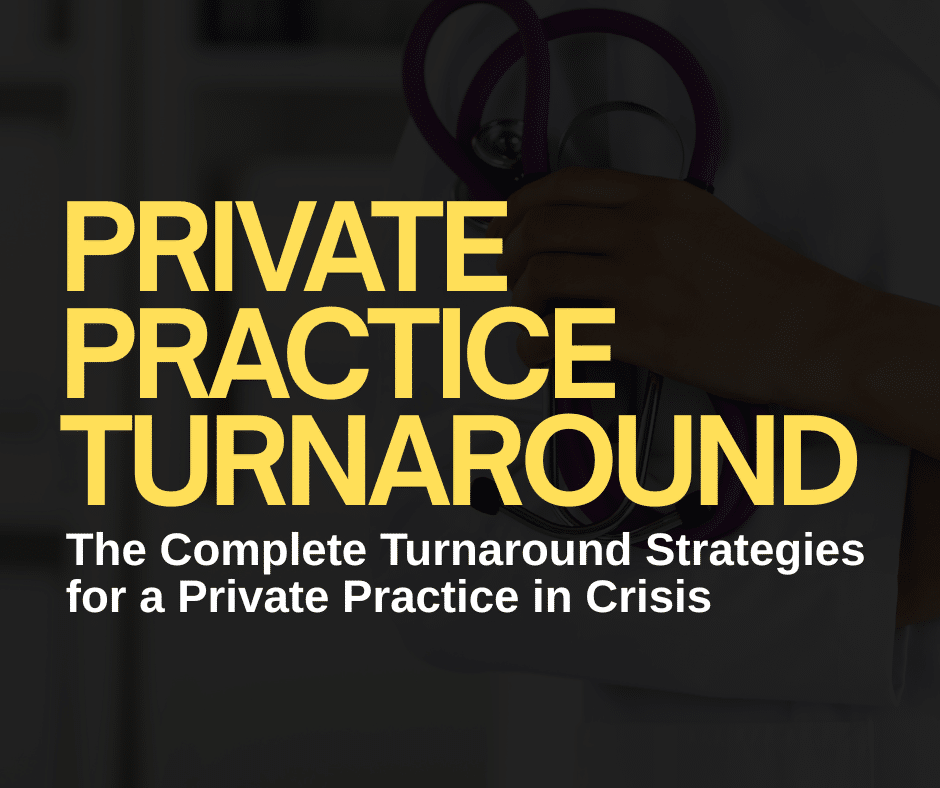
Physician Entrepreneurs… let’s talk about something most of us would rather not…
Difficult conversations.
If you’re a physician entrepreneur—especially one who leads a team—this is a skill you must master.
I avoided these for a long time. I’m phlegmatic by nature, which means I love peace. I don’t like conflict. I’ll do all I can to avoid it.
But here’s the truth:
Entrepreneurs solve problems.
For clients. For teams. For your industry.
And guess what problem-solving requires?
Yup—leaning into hard conversations, not away from them.
Real-Life Example: The 120 Outstanding Charts
Let’s paint a scenario.
You’re a pediatrician running a private practice (a low-ticket, high-volume model). One of your associate physicians has 120 charts outstanding—some 30 days old, some 90 days old.
You don’t want to be mean. You don’t want to micromanage.
But you also can’t bill for those visits. That means no payment. No cash flow. And you’re paying that doctor anyway.
This is a business risk. It’s a burnout risk. It’s a “something’s gotta change” situation.
So, what do you do?
The 5-Step Framework for Having a Difficult Conversation
1. Decide to Have It. Schedule It.
Don’t procrastinate. Don’t drop hints.
Schedule the meeting and commit to it.
Even if your heart races. Even if you’re scared.
It’s just like your first IV or intubation—you weren’t confident at first either.
2. Paint the Picture (Your Side)
Start the meeting with warmth—but don’t drown in small talk.
Say something like:
“Dr. X, I’m glad we’re meeting today. I want to talk about the outstanding notes and what it means for the practice and for you. I want us to work together on a solution.”
Explain the business implications:
- Audit Risk: If notes are incomplete for 90 days, that’s a malpractice risk. Timestamped EMRs don’t lie.
- Cash Flow: No billing = no revenue = other doctors carrying the weight.
- Personal Impact: Carrying 120 unfinished charts is mentally exhausting. That follows you home. That’s not okay.
Lay out the reality clearly and professionally.
3. Invite Their Perspective
Ask open questions:
“Talk to me. What do you think is going on? What’s making this hard right now?”
You may uncover:
- Family or health struggles.
- Workflow inefficiencies.
- Misaligned expectations.
- Mindset issues around perfectionism.
Listen to understand—not to blame. This is collaboration.
4. Work Through Solutions—Realistically
Now brainstorm. They might say:
- “I need fewer patients.”
- “I need a charting coach.”
- “I want hour-long visits.”
Great. But remember—no decision exists in a vacuum.
Walk them through the math:
If we earn $100 per patient, and you only see 8 per day, that’s $800/day. With 50% overhead, there’s $400 left—split between your pay and practice profit. That caps you at ~$96K/year. Is that sustainable for you?
Some solutions might work (like hiring a scribe or implementing AI-assisted charting). Others might not.
Do the math. Run the strategy. Be honest about what’s feasible.
5. Set Accountability Metrics
Solutions without tracking = wishful thinking.
So define:
- New standard: “All notes completed within 24 hours.”
- Backlog plan: “Complete 5 old charts per day until caught up.”
Build in follow-ups—weekly check-ins, dashboard reports, emails, Slack updates. Doesn’t matter how—just be consistent.
People do what you inspect, not what you expect.
Bonus: Celebrate + Correct Simultaneously
Let’s say after 2 weeks they’re:
- Doing all notes in 24 hours ✅
- Clearing 4 old charts/day (instead of 5) 🤏
Here’s how to respond:
“You’re crushing the 24-hour note standard—amazing job! We’re at 4 old notes/day, which is close. How can we hit 5/day? What support do you need?”
Do both: Celebrate progress. Correct the gap. Never just one.
Recap: The Difficult Conversation Framework
- Schedule the convo. Don’t delay.
- Paint the picture. Lay out your perspective clearly.
- Listen deeply. Ask and hear their side.
- Co-create solutions. But vet them through your business lens.
- Set metrics + follow up. Celebrate + correct as needed.
The Fastest Path to Business Growth for Physician Entrepreneurs
You became a doctor to help people not to be stuck in survival mode.
If you’re ready to scale your practice or business with a proven system, you don’t have to do it alone.

When you’re ready, here are 4 ways we can help you:
The EntreMD Business School –Join a thriving community of 100+ physicians and gain the business education medical school didn’t teach you. Apply today to take the next step.
The EntreMD Podcast – Weekly insights from top physician entrepreneurs.
The Profitable Private Practice Movement – Step-by-step strategies to scale your business.
The 5-minute Business Accelerator: Join 5,000+ subscribers to get weekly tips that will move you closer to your first or next 7-figures in revenue.

